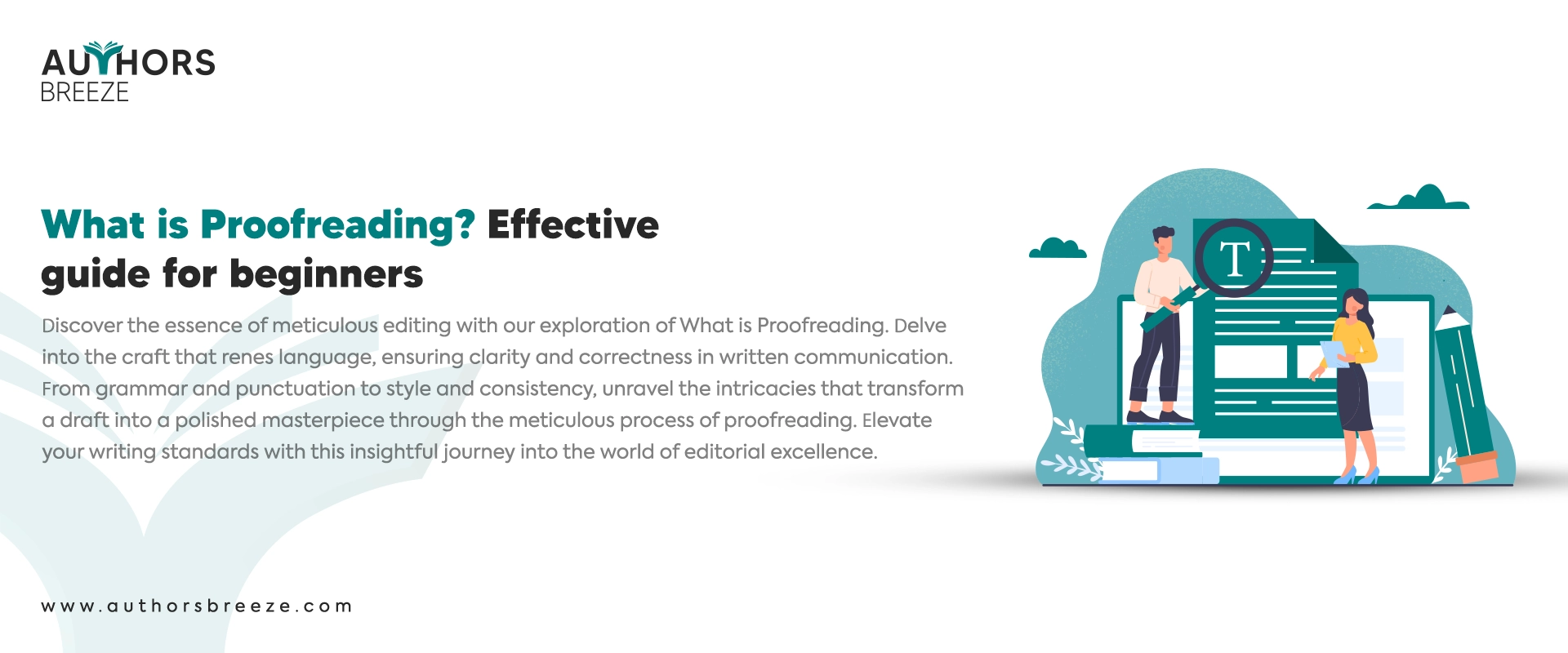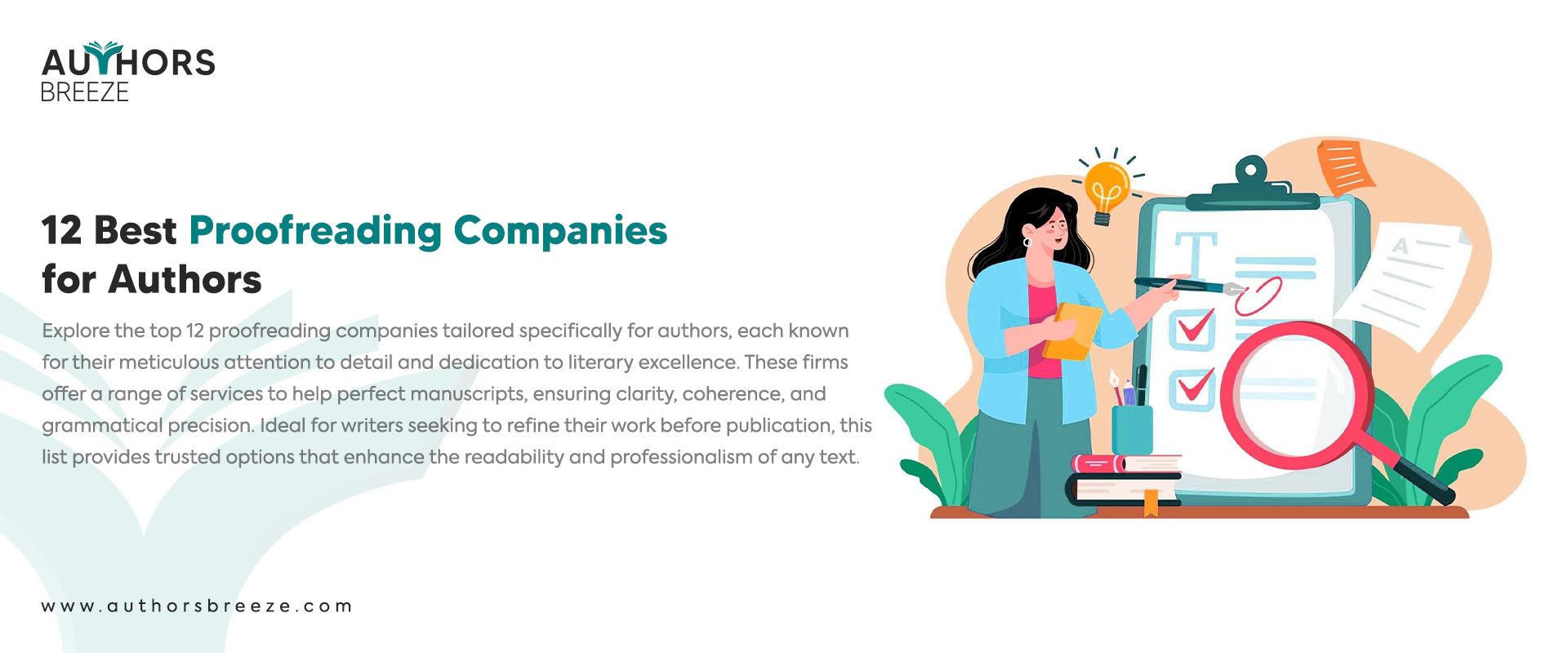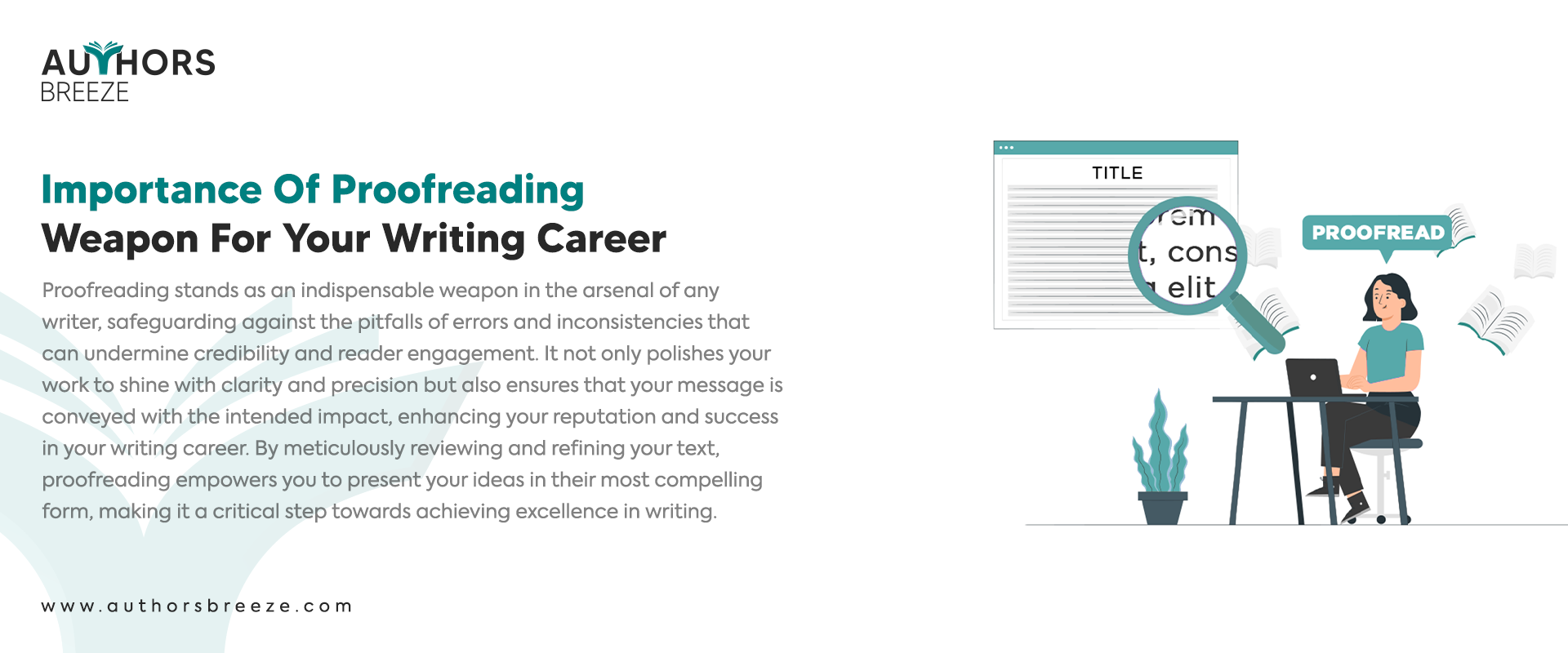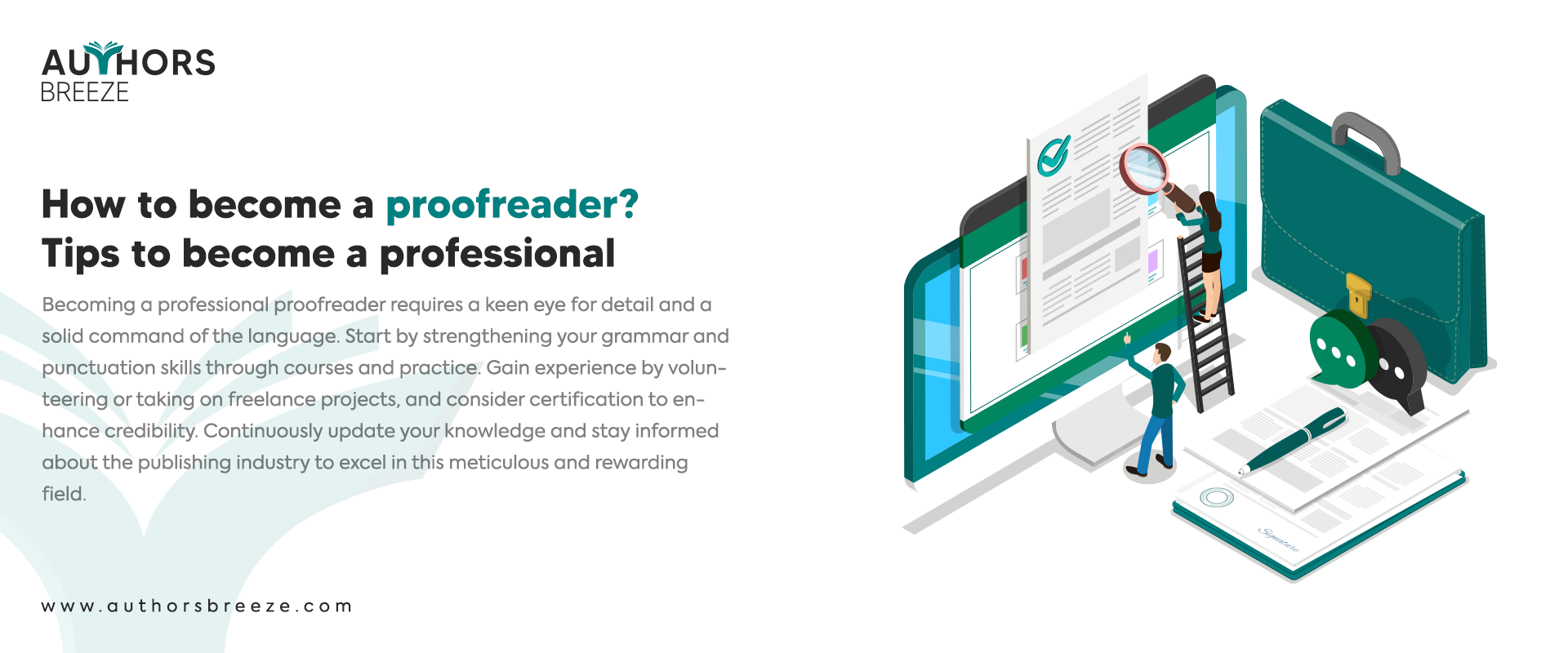Don’t Have Time to Read? Listen to this Article Instead!
Key Takeaways – What is Proofreading?
- Proofreading is an integral part of writing. It helps refine written content to its purest form.
- It ensures that the document is accurate and clear. This happens when you address mistakes in grammar, style, and others as well.
- Proofreading and editing have different purposes. It focuses on basic issues such as grammar and format. On the other hand, editing addresses issues such as structure and clarity.
- Automated tools can be convenient, but they make errors as well. Human proofreaders, on the other hand, understand context and can also adapt. This makes them more effective despite being time-consuming.
- Proofreading helps bring credibility and clarity to written content. It makes sure that the content is accurate and helps maintain the author’s attention to detail.
- For effective proofreading, you have to review in an organized way, read aloud, and take breaks between revisions. It is also important to avoid common mistakes, such as overuse of tools.
Ensure Your Writing is Flawless
Don’t let typos and grammar errors distract your readers from your brilliant ideas. Our certified proofreaders thoroughly check your content and make sure it is polished to perfection.
Introduction
Writing is a skill in itself, and it requires other skills as well. Writing is of no use if it lacks clarity and precision. Proofreading skills are just one of those skills. It is a necessary process and has many benefits.
Proofreading is the fine-tooth comb that polishes text to perfection. It is a careful process to remove any errors in the content. It involves various checklists such as:
- Grammar
- Punctuation
- Spelling
- Inconsistent Style
Proofreading is an art in which one ensures clarity and correctness. It helps refine the content until it shines with clarity. In this blog, we will explain everything that has to do with proofreading. We will cover different topics in this blog. So, buckle up and keep reading.
What is Proofreading?
Proofreading is where you read written work and mark any errors you find. It is one of the most critical parts of the writing process. In addition, it holds great importance when it comes to refining written content to its purest form. This basically means the careful checking and correction of written material. It ensures that the content is:
- Accurate
- Consistent
- Clear
Proofreading is rarely considered a “basic edit.” It’s simply one step in the editing and revising journey that takes your manuscript from a rough draft to a polished final copy ready for publication on your book launch day.
In addition, do not think that it is just a spell-check process. It is more than that. Proofreading has more aspects that are:
- Grammar
- Punctuation
- Format
Moreover, it is also called the polishing or final touch in the content process. It refines the process in the best form. In addition, it ensures that the originality of the content remains intact with clarity. If you’re not sure about what your content requires, your book writing coach can guide you on the next steps.
Difference Between Proofreading & Editing
The terms “proofreading” and “editing” are often used interchangeably. However, they are not the same. Each of them has its own unique purpose. It is essential to know the difference between both writers and editors.
It is the checking of written content for mistakes. The checklist for proofreading is as follows:
- Grammar
- Spelling
- Format
It focuses on the most basic issues. This ensures that the content is correct and consistent. Proofreaders carefully check each sentence and eliminate any mistakes, such as:
- Typing Errors
- Grammatical Mistakes
- Clarity Issues
The main purpose of proofreading is to polish the content and make sure that the final draft is free from any mistakes. On the other hand, editing addresses issues of:
- Structure
- Clarity
- Style
Editors check the content and correct the mistakes. They take steps such as:
- Refine the content.
- Improve sentence flow.
- Increase effectiveness.
In addition to this, it also involves other things as well. Editors often:
- Rephrase
- Restructure sentences.
- Add clarity.
- Make sure content is consistent in terms of tone and voice
The thing that makes them different from each other is the primary purpose of both. There are many types of editing. All of them basically focus on correcting the most basic issues. On the other hand, proofreading focuses on the bigger issues.
Polish your Manuscript to Perfection!
Transform your writing into a masterpiece with the help of our professional editors. Authors Breeze has expert editors on their team.
What Does a Proofreader Do?
The proofreader’s task involved comparing the finalized typeset version with the copyedited version to spot any new mistakes that might have been made during typesetting or copy editing.
Professional proofreaders are needed in the writing and publishing process. They check the content thoroughly to maintain accuracy and quality. It is their responsibility to:
- Identify Errors
- Feedback
- Extra Skills
Identify Errors
The primary responsibility of a proofreader is to identify errors. The first thing they have to check is the grammar and spelling as it is the most essential. Then, they identify the punctuation and formatting mistakes. At last, they check for inconsistencies in writing style and tone.
Feedback
With the above, they also have to provide constructive feedback for improvement. They may suggest revisions to enhance clarity. Provide advice for improving consistency in content. Lastly, they guide to maintain the effectiveness of the document.
Extra Skills
Apart from other responsibilities, they also possess some extra skills as well. On top of them is attention to detail. Proofreading requires attention to detail to spot even the most subtle errors. Expertise in grammar and language is a must as well.
All of these skills combine to make up a professional proofreader. If you do not have these skills, you can also learn them with practice and dedication. Proofreaders don’t just work in publishing. They can also find jobs in places like schools, newspapers, and ads. Sometimes, they even review slides for business meetings.
Automated Proofreading vs. Human Proofreading
Automation is very popular, and many use it for their work. There have been many debates regarding both of them and which one is better. Automated tools offer convenience and speed. They also have their own issues.
Proofreading tools can be a great option for various reasons in terms of:
- Efficient
- Consistent
- Accessible
However, they are not so good in some aspects, such as:
- Lack of Context
- Limited Details
- Unnecessary Corrections
On the other hand, human proofreaders also come with pros and cons. Their pros are:
- Context Understanding
- Detail Orientated
- Adaptable
Just like tools, humans also have some shortcomings. Their cons are:
- Time-Consuming
- Subjectivity
- Availability
Comparing both, humans are worth more as they offer more value. Furthermore, humans are the ones who use the tools. Therefore, we would suggest taking help from both, but humans will always have an advantage over it. This is because they understand the context and can offer exactly what is required.
The Importance of Proofreading in Writing
Proofreading is the final piece of the puzzle. It is highly important to make sure that the content is perfect in every aspect. Here are some of the reasons why it is important.
The biggest reason for its importance is that it makes the content clear and brings comprehension to it. It can It not only corrects spellings but also helps with other things, such as:
- Grammar mistakes
- Punctuation errors
- Spelling mistakes
In addition, it helps deliver the message accurately and effectively
Moreover, proofreading adds credibility to your content. Mistakes in the content can also reduce the trust of the audience. A refined and error-free content is essential as it shows the author’s attention to detail.
Furthermore, it contributes to the overall quality and impact of the content. When you refine the material and improve sentence structures, it improves the quality of the content at best. It ensures consistency in style and tone as well, which helps convey ideas with accuracy.
Therefore, it is an important part of the writing process. You need it to bring clarity and credibility to your content by investing time and effort in carefully checking everything. You can take your documents to new heights of excellence.
Tips and Techniques For Effective Proofreading
To make your writing free from any errors, you have to follow some rules. Here are the best tips and techniques that can enhance the efficiency and accuracy of the process.
Firstly, go with an organized manner, as it is important for effective proofreading. Just review the content for overall structure before you go to finer details. This will help maintain focus and will increase efficiency.
One of the most underrated tips is to read what you have written loudly. It is a powerful technique to find errors that you may miss otherwise. This helps you refine your content further.
As we discussed above, you can and should use tools with professional proofreaders on your back. There are plenty of tools that can help you improve your written content in the best ways.
Last but not least, take breaks between revisions. It is important to concentrate. It is also good for your own health as it prevents fatigue.
Make Your Writing Dream Come True
Are you dreaming of writing your own ebook but not sure where to start? Let our experienced team guide you and unlock your potential as a published author!
Common Mistakes in Proofreading & How to Avoid Them?
While proofreading tools can be helpful, they are not perfect as well. You do not have to rely completely on tools. It can cause you to miss issues that require human judgment. To avoid this mistake, do not overuse the tools. Invest more time checking yourself to ensure thorough error detection.
Another mistake in proofreading is neglecting the context of the text. This causes you to miss mistakes that could confuse readers. To prevent this, carefully check the content’s intended message. This will ensure that the text effectively communicates its purpose.
Lastly, things can appear clear and error-free on a digital screen but may reveal overlooked mistakes when printed, and vice versa. To avoid this, review documents in both print and digital formats and adjust accordingly to catch errors. This will ensure that all errors are identified and corrected.
Tools and Resources For Proofreading
There are many tools that you can use to enhance and improve the proofreading process. There are tools for grammar check, style guides, and more. Below are some of them that you can use.
Style Guides
You can also use style guides such as APA and MLA. They offer comprehensive guidelines for various aspects, such as:
- Formatting
- Citation
- Language usage
They are beneficial for references. Such tools ensure consistency and stick to the writing standards.
Grammar and Spell-Checking Software
To identify grammatical errors and spelling mistakes, you can use tools such as:
- Grammarly
- Hemingway
Both of them offer real-time suggestions and corrections. This helps improve the efficiency and accuracy of the document.
Frequently Asked Questions
What is the difference between editing and proofreading?
Editing focuses on making text more readable by checking for clarity, style, and more. On the other hand, proofreading focuses on removing errors and mistakes in grammar, punctuation, and other such issues.
Do you need qualifications to be a proofreader?
Yes, proofreading requires a relevant degree. You have to possess some sort of certification, at least if you want to be a proofreader.
What are the duties of a proofreader?
The primary role of a proofreader is to assess content and identify errors in the document carefully. They also have to find errors such as grammar and spelling. Their work also includes correcting punctuation and syntax errors.
Conclusion
Proofreading is an important part of written content. It ensures that everything is perfect. This makes the document clear and correct. While some may think that it is just about fixing typing mistakes; however, it is not. To proofread means to refine your content until it shines with perfection.
Therefore, focus on this particular skill by following our tips and techniques. If you cannot do it, for whatever reason, you can pass it on to professionals as well. Authors Breeze is one of the best companies that offers errorless proofreading services. If you want your documents to be flawless, then do consult us.
Share Your Story with the World!
Take the first step toward becoming a published author. Ensure your manuscript receives the attention it deserves from experienced professionals.






